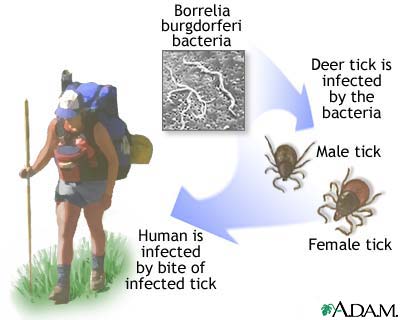
The symptoms of Lyme disease in dogs differ from those in people, and usually occur much later after the tick bite. Clinical illness in dogs usually occurs 2 to 5 months after a bite from an infected tick. Cats can develop Lyme disease, but it occurs rarely in them, even in endemic areas. other domestic animals such as horses have contracted Lyme disease, but it does not appear to be a significant problem. Dogs show several different forms of the disease, but by far, the most common symptoms are a fever of between 103 and 105°, lameness, swelling in the joints, swollen lymph nodes, lethargy, and loss of appetite.
Although not common, some dogs have developed severe progressive kidney disease as sequelae to Lyme disease. this severe kidney failure is difficult to treat and may result in death of the dog. it is recommended that a dog with a positive Lyme antibody test have additional blood tests and a urinalysis to assess kidney function. Some dogs may also develop heart problems or nervous system disease after being infected with B. burgdorferi.
Dogs do not develop the typical rash or the circular area of redness around the bite (erythema migrans) which is seen in people.
- Lameness in legs
- Loss of appetite
- Swelling in leg
- Fever
- Dehydration
- Lameness
- Swollen lymph nodes
- Joint disease
- Kidney disease